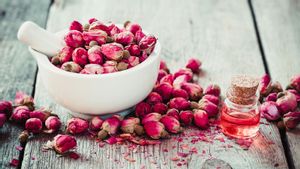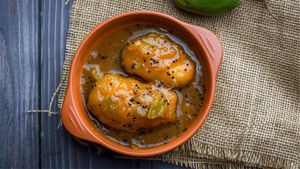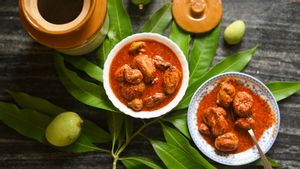It was a cool summer night, my grandmother and other elder ladies of the house were seated in a circle at the verandah. My cousins and I sat around them, pretending to play, but we were curious about what the ladies were up to. The chit-chat led to them opening their paandaan, a box that held the ingredients for making paan (a preparation of betel leaf, slaked lime, areca nut, fennel seeds and a few other ingredients that’s eaten as a mouth freshener and digestive). Our curiosity waned; we had seen that box before and there wasn’t anything in it for us, or so we thought. Just as we dispersed, my aunt called out to us and offered us a paan each.
I looked at my mother, slightly confused, she had strictly told me paan was for adults only. But this time, she smiled at me and said, “Le lo.” As I popped the paan in my mouth, the little green wrap burst with flavours I had never experienced before. A rich, sweet and aromatic preserved rose lingered and that was my first encounter with Gulkand, a sweet preserve of rose petals.
But there’s more to this ancient rose preserve, Delhi-based food historian Salma Hussain informs. Since time immemorial, it is being used for medicinal as well as culinary purposes. Intrigued, I set out to discover more.
A teaspoonful of past and present
Despite its popularity amongst erstwhile royals and the present-day aam aadmi, it is surprising that gulkand does not have its origins in India. Hussain’s research shows that this sweet rose preserve comes from Persia and its name a portmanteau of the Persian and Arabic words ‘gul’ and ‘kand’ which mean ‘rose’ and ‘candy’, respectively.
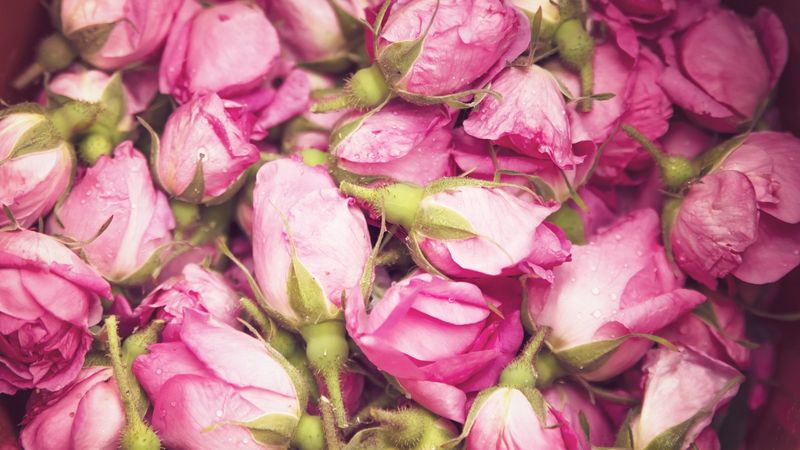
Originally, gulkand was prepared using the Damask rose, a variety of pink rose known for its heady, sweet fragrance, which is widely grown in Turkey, Pakistan, Iran, Bulgaria, Europe, India and Syria even today. “This rose first made its appearance in northern Persia in 900 BC and then spread across Asia Minor and Greece,” shares the historian. She also mentions that Damask rose oil was distilled for its medicinal properties in 17th century Europe. They used it to treat eye diseases, headaches and heartburn; to name a few. The other formulations of this flower were (and still are) rose water and rose petal tea.
According to Ragini Kashyap, a food researcher and blogger at Third Culture Cooks, the damask rose came to India during the Mughal era, and so did the method of preparing gulkand. “We were using elements of rose for medicinal purposes in Ayurveda, but it involved using the Kashmiri rose and not Damask. With the Mughals investing heavily in Indian agriculture, because they were missing the ingredients from back home, is the time when we [Indians] started cultivating the Damask rose.” This variety of rose was a preferred flower of the Mughal royalty. It can be witnessed not just in their food but also in their paintings,” she adds.
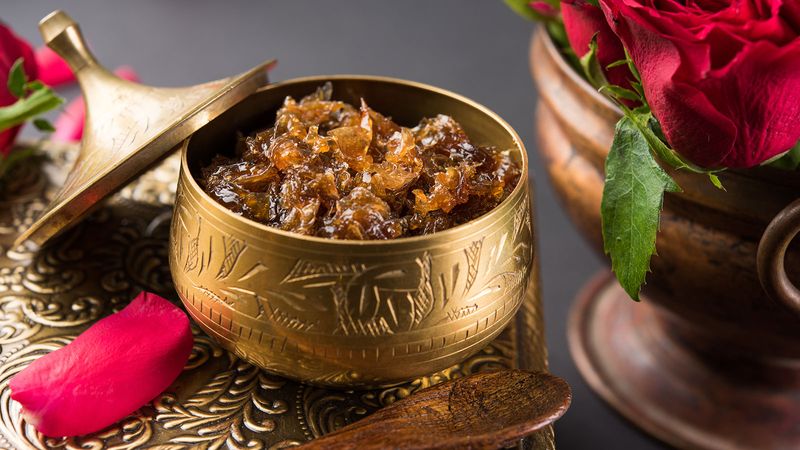
Cut to today, gulkand is a treat for paan lovers in Maharashtra, Rajasthan, Madhya Pradesh, Karnataka and Andhra Pradesh. But when it comes to the demand and production of gulkand, Uttar Pradesh (UP) leads the way. UP’s love for gulkand is such that in 2015, the state government made it tax free. Kannauj in UP, also known as the perfume capital of India, is a major hub in gulkand production. The sweet rose preserve from here is not limited to the Damask rose. Damask rose blooms twice a year, in summer and autumn, which makes gulkand an exclusive and expensive delicacy. To fulfil its demand all-year round, local manufacturers in Kannauj use local rose species for gulkand.
Power-packed
“Ayurvedic and Unani medicine have been using gulkand for its medicinal and health benefits,” informs Vikas Chawla, founder and director of Vedas Cure. “The focus has been on treating ailments caused due to excessive heat and relieving fatigue, respectively.” Most of the healing properties of gulkand – mild laxative, antibacterial, antioxidant, digestive stimulant and anti-inflammatory – come from rose petals and almost all varieties of roses have similar therapeutic benefits. This means, it may help enhance memory, improve digestion, control digestive issues, purify blood and get rid of toxins from our body. “For people suffering from insomnia, migraine or severe headache, it is suggested to take gulkand with milk, while those with digestive issues must mix it with water and drink,” adds Chawla.
An article in the International Journal of Ayurveda and Pharma Research states that Damask rose helps in the treatment of abdominal and chest pain, strengthening heart, treatment of menstrual bleeding and digestive problems. This is in addition to treating mild constipation, mouth ulcers, bleeding disorders and excessive sweating.
Celebrity nutritionist Rujuta Diwekar, as part of her ongoing 12-week fitness project, conducted an IGTV Live where she spoke about the importance of gulkand in summer. She mentioned that this natural coolant, apart from the benefits listed above, helps with a range of ailments such as eye inflammation, sunstroke, PCOS, acne and irregular sleep. Mira Kapoor
Mira Kapoor's gulkand recipe

Recently, Mira Rajput Kapoor, a self-confessed Ayurveda fan, took to Instagram to reveal that one of the reasons for her health and glow is a spoon of gulkand in water or milk after lunch or dinner. “I have it daily, and I thought I’d give it a try cause I don’t think I can ever ‘lagao achaar’. Might as well try it’s jammy cousin (sic),” read her caption.
She also shared the health benefits of her “Rose Apothecary” and showed how to make gulkand using desi gulab petals from her home garden and mishri (rock sugar) in equal quantities and a pinch of cardamom powder. It only takes these three ingredients to make your own batch of gulkand at home.
Gulkand beyond paan
A meetha paan is incomplete without a scoop of gulkand, but you can also have a teaspoon of it for its medicinal properties. But the versatile preserve can also be used as a flavouring agent in desserts and drinks. Traditionally, gulkand is paired with milk and milk-based sweet treats—rose phirni, rose kheer, gulabi malpua or gulkand shikanji. Modern-day chefs and home cooks have used gulkand to create contemporary dishes—think gulkand ice cream, gulkand cocktail and even gulkand barfi.
Try this recipe of Gulkand Apple Pie Parfait to satiate your sweet tooth cravings on a sweltering hot day:
Gulkand apple pie parfait recipe
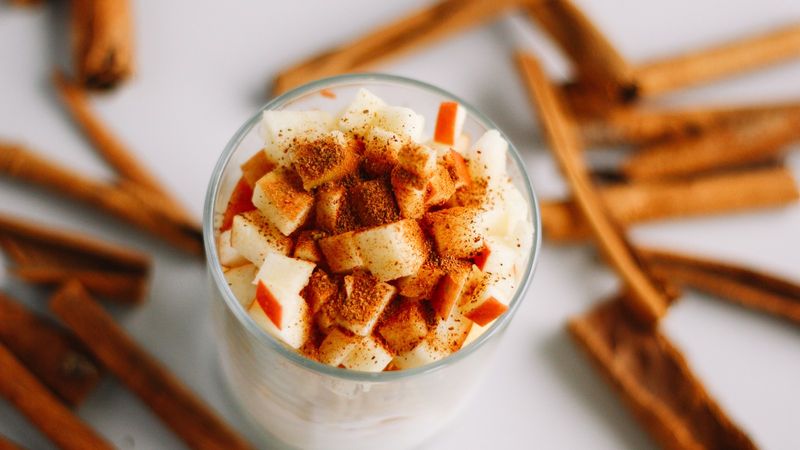
Ingredients:
1. 2 apples, peeled and finely diced
2. 1 tbsp lemon juice
3. 1 tsp cinnamon powder
4. 1/2 tsp cardamom powder
5. 4 cups regular yoghurt
6. 1/2 cup roasted pistachios (or nut of choice)
7. 1/2 cup popped amaranth (or popped rice)
8. 6 tbsp gulkand
Method:
1. Keep 4 clean dessert bowls, or clear glasses ready to plate the parfait.
2. Place the yoghurt in a muslin cloth, and let it strain for 4-6 hours (can leave this overnight, or do it the day before) .
3. Smear the bottom of each bowl with one teaspoon of gulkand, spreading it out on the bottom and sides.
4. Divide the apples between the four bowls.
5. Divide and layer the popped amaranth on top of the apples.
6. Divide the strained yoghurt, and layer on top of the popped amaranth.
7. Place a tbsp of gulkand on top of the yoghurt.
8. Decorate with the pistachios.
9. Sprinkle a little cinnamon and cardamom powder on top if you like!
Recipe by Ragini Kashyap




